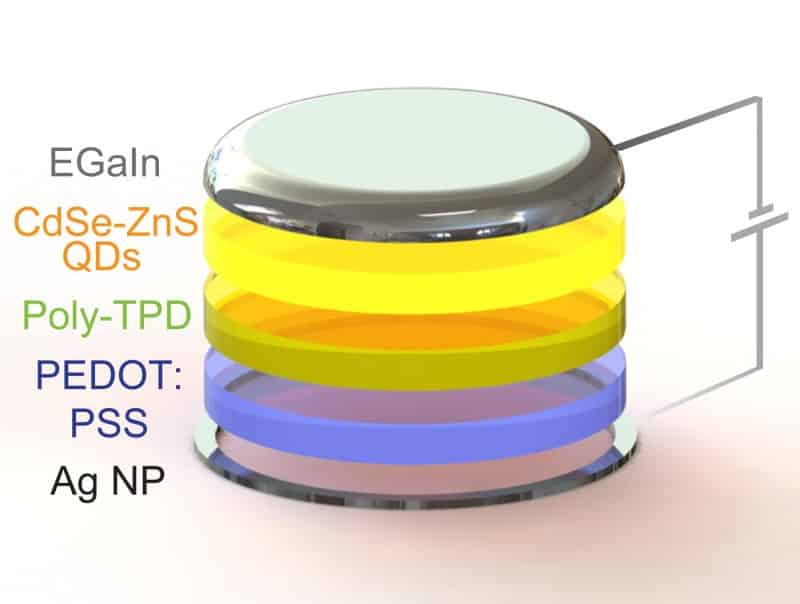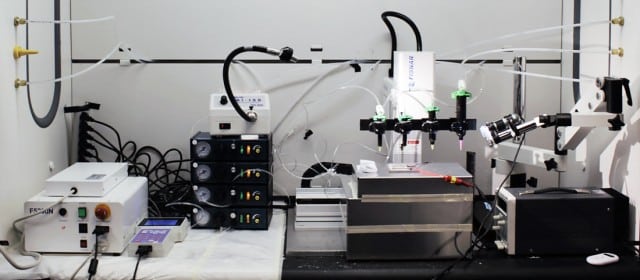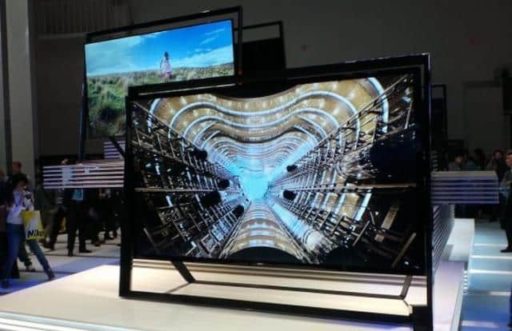3D printing has been touted as the most amazing thing to happen to manufacturing since the assembly line. But the problem is that right now most 3D printers can only print the equivalent of plastic toys—plus a few guns, pizzas, and body parts here and there. But mechanical engineers of Princeton University have created such a 3D printer that can create fully 3D printed LED lights.
This 3D printer works in a similar fashion like other 3D printers that rely on plastic, but on a much smaller scale. It lays down a single layer of the LED, then moves up to add the next one composed of a different material. McAlpine and his colleagues mixed and matched five different materials into the first fully 3-D printed LED lights. When the five-layer stack was complete, it became a functional quantum dot LED.
At the bottom of five layers, a metal ring made of silver nanoparticles acts as a metal contact to an electrical circuit. On top of that are two polymer layers (both with really long chemical names) which together supply and shuttle electrical current to the next layer. That contains the quantum dots. The quantum dots are made of cadmium selenide nanoparticles wrapped in a zinc sulfide shell. As the electrons bump into these quantum dots, they emit orange or green light. The light is topped of with a cathode layer made of eutectic gallium indium, through which the electrons flow out of the LED.
For your kind information, quantum dot LEDs are in some ways quite similar to the LEDs used in current smartphones and lightbulbs, but again, smaller. A quantum dot LED can display a wide range of colors without the degradation or vulnerability to humidity and oxidation of LEDs and AMOLEDs. However, to make the LEDs from scratch, the researchers had to build a custom 3-D printer. They spent about six months and between $10,000 and $20,000 assembling the printer.
However, the printed LEDs performed on par with the kinds of LEDs that are used in iPhone screens, though they didn’t come close to beating the really fancy LEDs that are out there. But by controlling thickness and uniformity of the quantum dots, and by experimenting with different ink formulations, the performance of the printed LEDs could get better. Perhaps one day, if 3D printers get cheaper, people could incorporate something like this into homemade TVs and iPhones.
Source: PopSci
Thanks To: Extreme Tech
[ttjad keyword=”printers”]




